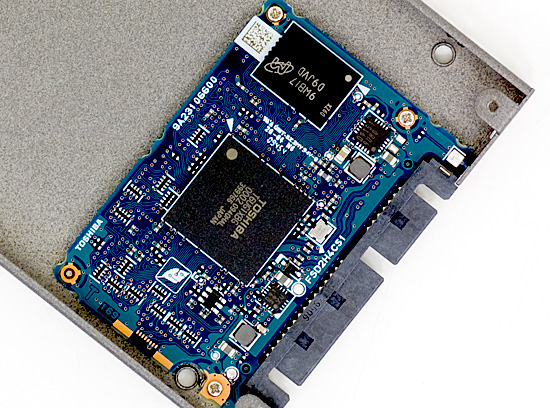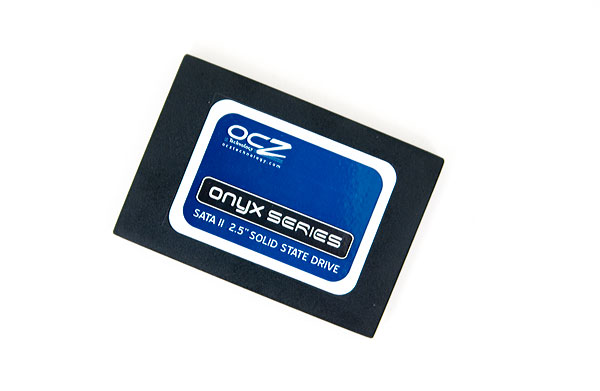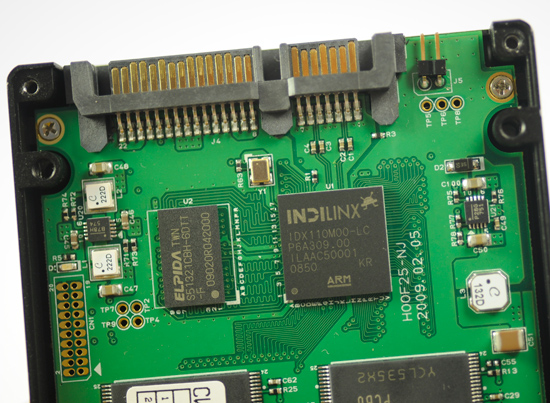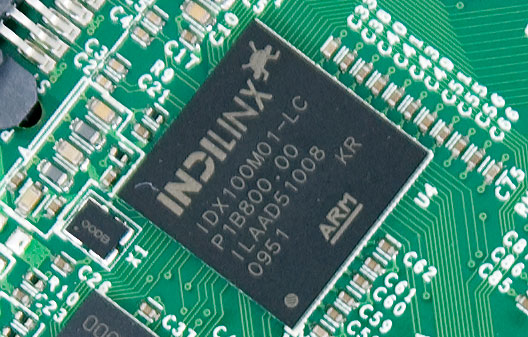2010 Value SSD (~$100) Roundup: Kingston and OCZ take on Intel
by Anand Lal Shimpi on June 3, 2010 12:01 AM ESTTwo years ago the best SSD you could buy was made by Intel and it cost $7.44 per GB of MLC NAND. Today Intel is actually the value leader. The 80GB X25-M G2 will set you back $205 at Newegg, or $2.56 per GB. The performance crown now belongs to companies like Micron and SandForce. Although Intel hopes to have performance leadership once more with its 25nm SSDs due out in Q4, the priorities have shifted. Intel’s focus is on bringing SSDs to the mainstream; it wants a bigger slice of the HDD pie. At the end of the day, that’s where the money is.
At just over $200 that’s affordable enough for high end notebooks and desktops but what about more mainstream price points? For many the $99 mark is key. Luckily as SSDs have gotten faster, a new breed of small, affordable SSDs have emerged right around the $100 mark. Today we’re going to take a look at three of those devices.
Intel’s X25-V 40GB
We’ll start off with Intel’s X25-V, currently only offered in a 40GB flavor. We’ve reviewed this drive before and it currently sells for $125 at Newegg. A bit more expensive than our other competitors, the X25-V uses Intel’s standard X25-M G2 controller but only has 5 of its 10 channels populated. The end result is a drive that performs similarly to the X25-M G2 in small file accesses but is about half the speed in large transfers.
The other disadvantage to the X25-V is its capacity. Intel uses all available capacity as spare area until it’s used up, which on a 40GB drive isn’t that much. Once you’ve got Windows 7 and a few applications on the drive you are lucky to have 15GB free. The less free space on the drive, the lower the controller’s performance will be and there are some areas where the X25-V will be less than half the speed of the X25-M G2.

The drive supports TRIM and comes with a 3-year warranty.
Kingston SSDNow V Series Boot Drive 30GB
Kingston used to sell a rebranded X25-V however in an interest to drive prices down even further Kingston switched to a cheaper Toshiba controller - the T6UG1XBG. The drive supports TRIM but not NCQ, which won’t be an issue for very light usage models but could be a problem for heavier workloads.

The most attractive part of the SSDNow V Series Boot Drive is its price. The drive alone will set you back $90 at Newegg, although you can get it in an upgrade kit for $115 (3.5" bay adapter). Like the X25-V, the 30GB drive comes with a 3-year warranty.
OCZ’s Onyx
The final drive in today’s roundup is the only one we haven’t previously reviewed here: OCZ’s Onyx. The Onyx uses an Indilinx Amigos controller, which is basically half of a Barefoot controller. You get four NAND channels instead of eight and maximum read/write speeds of 100/80MBps instead of 200/160 for Barefoot based drives.

The drive carries an $85 retail price for the 32GB version and comes with a 3-year warranty. OCZ also offers a 64GB version for $185.

Indilinx Barefoot

Indilinx Amigos
I owe OCZ an apology with regards to the Onyx. Here’s what happened. The first Onyx I got my hands on had a firmware bug that resulted in data corruption. A simple Windows install on my testbed revealed it. The install wouldn’t complete successfully. OCZ hadn’t seen the issue internally at first but eventually saw the same thing I did and immediately halted shipments. OCZ even contacted those customers who had received Onyx drives and replaced them.

The second Onyx I received supposedly fixed the data corruption bug I ran into before. It completed my Windows install but I got a CRC error during a SYSMark install. I incorrectly assumed that this was a problem with the Onyx drive once again and not an issue with my setup. I immediately contacted OCZ and told them that I was still having problems with the drive. After duplicating the same problem on another value drive it became clear that it was an issue with my SYSMark install and not the drive. I jumped to conclusions based on my previous experience with the Onyx drive without thoroughly testing the conclusion first. In fact, I did the very thing that we often accuse SSD makers of doing: not testing. In this case I wasn’t shipping a product but in my book, coming to a conclusion is the same thing. So to OCZ: I am sorry.
Now let’s get to the roundup.
| Value SSD Spec Sheet Comparison | |||||
| Intel X25-V | Kingston SSDNow V Series Boot Drive | OCZ Onyx | |||
| Controller | Intel 34nm | Toshiba T6UG1XBG | Indilinx Amigos | ||
| NAND | 40GB IMFT 34nm MLC | 32GB IMFT 34nm MLC | 32GB IMFT 34nm MLC | ||
| Channels | 5 | 4 | 4 | ||
| Sequential Read Speed | Up to 170MB/s | Up to 180MB/s | Up to 100MB/s | ||
| Sequential Write Speed | Up to 35MB/s | Up to 50MB/s | Up to 80MB/s | ||
| Random Read Speed | Up to 25K IOPS | Not Listed | Not Listed | ||
| Random Write Speed | Up to 2.5K IOPS | Not Listed | Not Listed | ||
| Warranty | 3-years | 3-years | 3-years | ||
| Price | $125 | $90 | $85 | ||
The Test
| CPU | Intel Core i7 965 running at 3.2GHz (Turbo & EIST Disabled) |
| Motherboard: | Intel DX58SO (Intel X58) |
| Chipset: | Intel X58 + Marvell SATA 6Gbps PCIe |
| Chipset Drivers: | Intel 9.1.1.1015 + Intel IMSM 8.9 |
| Memory: | Qimonda DDR3-1333 4 x 1GB (7-7-7-20) |
| Video Card: | eVGA GeForce GTX 285 |
| Video Drivers: | NVIDIA ForceWare 190.38 64-bit |
| Desktop Resolution: | 1920 x 1200 |
| OS: | Windows 7 x64 |










49 Comments
View All Comments
cknobman - Thursday, June 3, 2010 - link
Your reviews always show a breakdown of how a drive performs before and after TRIM. How are you issuing the TRIM command? I thought by default Windows 7 always issued the TRIM command on every operation as long as your drive supported it.gaspard - Sunday, June 6, 2010 - link
well you can disable it via Windows' fsutil command: fsutil behavior query DisableDeleteNotify NO TRIM: fsutil behavior set DisableDeleteNotify 1 TRIM ON: fsutil behavior set DisableDeleteNotify 0GullLars - Thursday, June 3, 2010 - link
I've been waiting for an article like this for a few months now, and you did a good job Anand, as always ;)I have a couple of questions:
Why not include OCZ Agility 30GB? ($119 @ newegg)
Why only test random write and not read at QD 32?
There is little difference in random writes, but random reads double for the x25-V, and i'd guess increase a bit for the Onyx too.
A full Barefoot drive can do 60MB/s random read @ QD 5.
x25-V can do about 70MB/s @ QD 4, and about 100MB/s @ QD 8 for random reads.
Why not include PCmark Vantage HDD subscores?
They are made to showcase the strong and weak points of storage performance, and are relevant to what drive to pick. The total HDD score can be the same for two drives with completely different strenghts.
Dylock - Thursday, June 3, 2010 - link
The OCZ Agility 60GB is on sale at Amazon.com for 144$, as of today. That's $2.4 per GB.An Indilix controller to boot. The lower grade memory comes into play for performance , but not by much.
Movieman420 - Thursday, June 3, 2010 - link
Currently a 30gb Vertex is $109 ($99 after rebate)! Instead the Onyx was used which uses 'half' of an Idilinx controller (Indilinx Amigo). I know you had an Onyx handy cuz of recent testing but really. Even tho the Vertex is 'old gear', it woulda blew the doors off the other drives in your testing.u.of.ipod - Thursday, June 3, 2010 - link
I want a SSD for my HTPC. Hopefully it can be shutdown and booted up more quickly, be more responsive in Windows Media Center 7 and finally to provide space for a second 3.5" storage drive. Is one of these value drives for me? Should I just choose a 2.5" mechanical drive instead?kmmatney - Friday, June 4, 2010 - link
The Intel 40 GB SSD works fine on Windows XP without TRIM. Just install the Intel SSD Toolbox, and it will perform a "TRIM" or garbage collection routine automatically, once a week.kmmatney - Friday, June 4, 2010 - link
Whoops - was supposed to be a new comment, and not a "reply"...gaspard - Sunday, June 6, 2010 - link
whichever one you like, and NO... those are the answers respectivelymrmike_49 - Saturday, June 5, 2010 - link
I'd like to see tests of loading times for various games, start-up as well as level loads. Games are an ideal use for SSDs, many many Reads, very few Writes. A $100 SSD that could triple my load speed (or more) would be nice.How about redoing this review, concentrating on actual load start-up times and level loads of popular games??!!